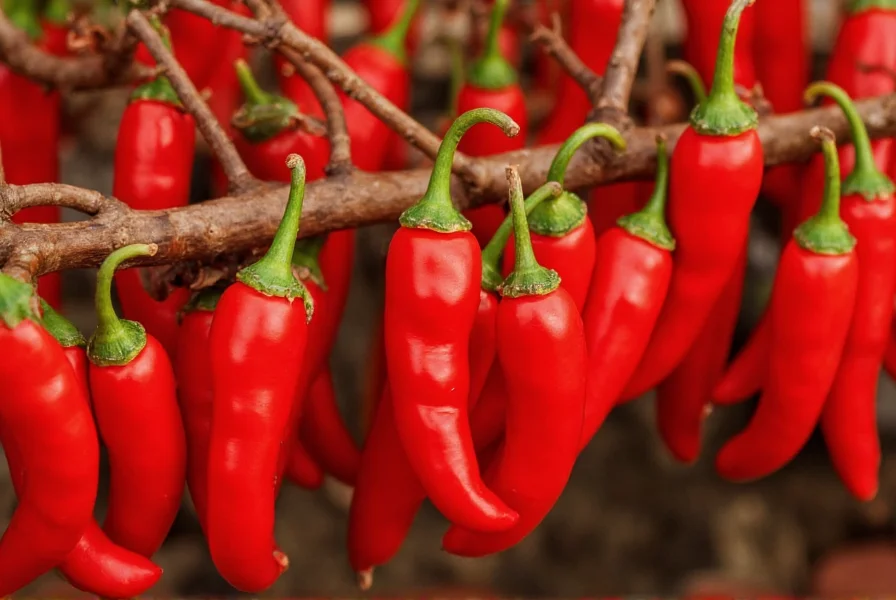For spice enthusiasts and culinary adventurers seeking to understand extreme heat levels in peppers, knowing the current record holder provides crucial context for heat measurement standards. This definitive guide examines the verified world's hottest pepper, how heat is scientifically measured, and important safety considerations when dealing with extreme capsaicin levels.
Understanding Pepper Heat Measurement
Pepper heat is measured using Scoville Heat Units (SHU), a scale developed by pharmacist Wilbur Scoville in 1912. Originally, the Scoville Organoleptic Test involved human tasters diluting pepper extract in sugar water until the heat became undetectable. The degree of dilution determined the SHU rating.
Today, high-performance liquid chromatography (HPLC) provides precise, objective measurements of capsaicinoids—the compounds responsible for heat in peppers. This modern method replaced subjective human testing, delivering more accurate and consistent results for what is the world's hottest pepper determination.
Pepper X: The Verified Record Holder
Developed by Ed Currie of the PuckerButt Pepper Company over ten years, Pepper X earned official recognition from Guinness World Records in 2023. The verification process involved multiple samples tested by an independent laboratory using HPLC methodology.
With an average rating of 2.69 million SHU and peak measurements reaching 3.18 million SHU, Pepper X significantly exceeds the Carolina Reaper's average of 1.64 million SHU. This substantial increase represents the most significant leap in verified pepper heat ratings in recent history.
Unlike viral claims about unverified "superhot" peppers circulating online, Pepper X underwent rigorous testing by accredited laboratories following standardized protocols—essential for legitimate world's hottest pepper certification.
Pepper Heat Scale Comparison
| Pepper Variety | Scoville Heat Units (SHU) | Heat Level Description |
|---|---|---|
| Pepper X | 2,690,000 (average) | Extreme, potentially dangerous |
| Carolina Reaper | 1,641,183 (average) | Extreme, intense burning |
| Trinidad Moruga Scorpion | 1,200,000-2,000,000 | Extreme, long-lasting burn |
| Naga Viper | 1,382,118 (average) | Extreme, intense heat |
| Habanero | 100,000-350,000 | Very hot, fruity flavor |
| Jalapeño | 2,500-8,000 | Moderately hot |
Safety Considerations with Extreme Heat Peppers
Consuming peppers at the extreme end of the Scoville scale requires serious precautions. Capsaicin concentrations in Pepper X can cause severe physical reactions including:
- Immediate burning sensation in mouth and throat
- Potential respiratory distress
- Skin irritation requiring medical attention
- Nausea and vomiting
- Temporary loss of sensation
Medical professionals advise against consuming pure extracts of peppers measuring above 1 million SHU. Even handling these peppers requires protective gloves and eye protection, as capsaicin can transfer to sensitive areas causing significant discomfort.

History of World's Hottest Pepper Records
The title of world's hottest pepper has changed hands several times in recent decades as breeders develop increasingly potent varieties:
- 1994-2007: Red Savina Habanero (577,000 SHU)
- 2007-2011: Naga Bhut Jolokia (Ghost Pepper) (1,041,427 SHU)
- 2011-2017: Trinidad Moruga Scorpion (2,009,231 SHU)
- 2013-2023: Carolina Reaper (1,641,183 SHU)
- 2023-present: Pepper X (2,690,000 SHU)
Each new record holder undergoes verification through standardized testing protocols. The progression demonstrates both advances in pepper breeding techniques and improvements in heat measurement technology.
Common Misconceptions About Superhot Peppers
Several misconceptions circulate about the world's hottest pepper:
- Viral claims vs verified records: Many online videos claim peppers exceeding 3 million SHU, but lack proper laboratory verification.
- Natural vs lab-created: Some believe synthetic capsaicinoids create record holders, but Pepper X and Carolina Reaper are naturally bred.
- Single pepper vs average: Records are based on average measurements across multiple samples, not single outlier peppers.
- Heat consistency: SHU ratings represent averages—individual peppers can vary significantly in heat level.
Understanding these distinctions helps separate verified facts from internet hype when researching what is the world's hottest pepper.
Practical Applications of Extreme Heat Peppers
Despite their intense heat, superhot peppers serve practical purposes beyond novelty consumption:
- Food industry: Used in minute quantities to create hot sauces and specialty foods
- Medical research: Studying capsaicin's effects on pain receptors
- Defense applications: Basis for non-lethal deterrents like pepper spray
- Agricultural research: Understanding plant defense mechanisms
Researchers continue exploring potential medical applications of capsaicinoids, including pain management therapies and metabolic research.











 浙公网安备
33010002000092号
浙公网安备
33010002000092号 浙B2-20120091-4
浙B2-20120091-4